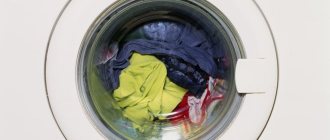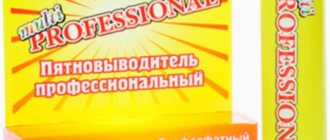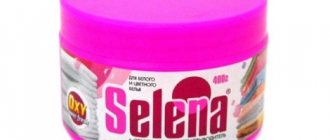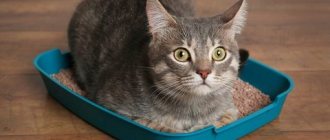Cutting boards are needed in every kitchen. We cut all products on them, from vegetables to hard cheeses. We don't always have a separate board for each food group, and fruits and raw meats may be cut on the same board. And although the board is washed after each use, the result is not flawless. Regular soap and detergent are not as effective as they should be. After a few years of use, the board almost completely fails. But don’t rush to throw it away until you try original cleaning methods.
1. Salt and lemon
This method works very well for cleaning wooden cutting boards. Scatter coarse salt on the board, and then begin to rub it with half a lemon, squeezing the fruit so that the juice begins to stand out. Rub until a gray liquid forms on the board. After the salt has dissolved, simply rinse off the remaining mixture with water and wipe the surface dry.
2. Lemon juice
If you don't have fresh lemon on hand, you can change the salt recipe by simply adding lemon juice from a bottle. Wipe the board with the slurry using a hard sponge. If the dirt is very strong, leave the mixture of salt and juice for a couple of hours. In this case, you need to make the mixture thick enough, and there should be more salt in it.
3. Vinegar
Vinegar is great for getting rid of stains. You can use it pure or dilute it with water in a 1:1 ratio. Vinegar not only cleans the board, but also kills bacteria. Pour the solution into a spray bottle and add to the board each time you use it. Then wipe with hydrogen peroxide, and after that simply rinse the surface with running water.
4. Bleach
Bleach is the best cleaning solution for plastic boards. Fill the sink with hot water and add half a cup of liquid bleach or bleach. Leave the board in the sink for 20-30 minutes and then rinse thoroughly with soapy water to remove any traces of chemicals.
5. Baking soda
If your board starts to smell bad, try getting rid of the smell with a paste of water and baking soda. Make a thick paste on the board and leave it for a while. Rinse off the baking soda and dry the board with a towel. The unpleasant odor should disappear.
6. Vaseline
Wooden boards should not be left in water for a long time, as this will cause them to become covered with unsightly stains. And although they do not interfere with the use of the board, it will no longer be possible to display it in a prominent place. Simply rub the stain on the board with Vaseline and leave for 12 hours. Once the Vaseline is absorbed, wipe off any remaining residue and wash the board. The stains should disappear.
7. Toothpaste
If the board has become rough over time, you can polish it with a mixture of baking soda and toothpaste. Just choose a white paste, not a gel. Wipe the surface along the grain of the wood. Then wipe the board with a damp cloth and dry.
8. Grated apples or potatoes
Another effective way to eliminate unpleasant odor is to cover the board with grated apple or potato gruel. Leave the paste for 10-15 minutes and then simply rinse with water. The smell will be much better.
9. Microwave
Small boards can be disinfected in the microwave. The method is not suitable for thin plastic. Do not leave the board in the oven for more than one minute. You can pre-wipe the board with soapy water and lemon.
10. Laundry soap
Be sure to lather the board with thick foam after cutting raw meat on it. It is better to immediately apply foam, and only then wash off traces of blood with water. Wipe down the board immediately after cutting to prevent stains from penetrating deep into the wood grain.
11. Steel sponge
In the most advanced cases, you will have to resort to mechanical cleaning. The steel wool actually removes a thin layer of wood, removing the stain. You shouldn’t resort to this method too often, but with some stains you can’t do without it.
12. White spirit
If the stain is too stubborn, soak a steel wool pad in a solution of white spirit and scrub thoroughly. After this, you need to thoroughly wash off the chemical with soapy water. Dry the board in the open air so that the fumes completely evaporate.
Key points:
- Different types of food require different cutting boards. This way you can avoid food poisoning when preparing meat products and you won’t have to constantly wash the same board when cooking.
- Hot water and dish soap are essential for cleaning cutting boards every day.
- Once a week, thoroughly disinfect all cutting boards.
Adviсe:
- Some food odors, such as garlic, onions and fish, are difficult to avoid. Dip a paper towel into pure lemon juice or take a lemon wedge and rub the surface - your cutting boards will smell citrusy fresh!
- Rub the board with coarse salt or baking soda to remove strong odors. Leave the substance on the board for 2 - 3 minutes, then wipe the treated surface. Rinse cutting board and dry.
- Bacteria die without moisture. Store the board in a dry place away from food and any other contaminants. Store your board upright when not in use.
Old boards in the interior of a modern house
The use of old boards in a modern house is appropriate when decorating any room:
Living room - aged boards can decorate the wall of this room; cracked paint will effectively combine with modern furniture and echo individual decorative elements. A floor made of old boards, decorated with a Persian carpet, whose lush design will contrast favorably with the worn floorboards, will look beautiful. The living room wall can always be decorated with a large mirror in an untreated frame made from old boards.
Bedroom - old boards can be an excellent basis for a headboard, a dressing table, or decorative ceiling beams. The latter can be equipped with lighting, which will effectively highlight all the cracks in the wood. Such elements in combination with a wooden floor will give the bedroom the charm of a secluded mountain house with its peace and harmony.
Barn board fits almost any style of interior
Dedicated sleeping area using aged boards
Kitchen - cabinet fronts, dining table, chairs, countertops can be made from old boards, creating an impressive contrast with modern glass and polished metal appliances. Such a kitchen will become much more comfortable, it will be pleasant to spend family evenings or receive guests.
Office - the charm of old boards will help you get into a working mood and immerse yourself in an atmosphere of reflection. Floors, walls, bookshelves made of old wood are perfect for leather furniture and the soft light of a table lamp.
Old boards are no less relevant in the interior of a dacha, where wood was traditionally used as one of the main materials. If the walls are covered with old clapboard, then you should not rush to completely remove it and replace it with gypsum board. You can breathe new life into dilapidated lining by changing its color and, if desired, sanding certain areas. This decoration will be complemented by modern country-style furniture, laconic furnishings in Scandinavian or minimalist styles.
Preventing food contamination
Who wants to suffer from food poisoning? Follow these simple tips to avoid such problems:
- Buy hard acrylic or rubber boards as they are the most hygienic to use (these are the boards commonly used in restaurants).
- Wooden boards should be disinfected regularly and kept as clean as possible.
- It is convenient to have several boards for different types of food. You should have at least two of them: one for raw meat and fish, the other for vegetables, bread and any other foods that can be eaten raw.
- Buy colored sets of cutting boards or label the boards yourself, this will make it much easier to distinguish them by purpose.
- Throw away any cutting boards that have cracks, large scratches, or obvious signs of dirt. Like all kitchen utensils, cutting boards have an expiration date and it is important to dispose of them promptly to maintain kitchen hygiene and cleanliness.
Processing cutting boards
Most wooden cutting boards are made from hardwoods such as teak, although bamboo cutting boards are also quite common. Any type of wood should be treated to prevent stains and keep food odors and bacteria from lingering on the surface.
Use an oil that can be used repeatedly, such as food-grade mineral oil.
It is safe and will fill the pores of the wood well. Another name is liquid paraffin, edible petroleum jelly. Rub the oil onto the board and let it soak into the wood. Wipe off excess oil with a clean, dry cloth. Repeat this process at least once a month.
Attention!
Do not use vegetable oil on cutting boards. This oil will go rancid and cause an unpleasant odor.
After mineral oil, apply beeswax
, it will make the surface of the board waterproof, which will protect the wood from wear and tear and extend its service life. In a microwave-safe container, microwave 1/2 teaspoon (2.5 ml) beeswax with 1 cup (240 ml) mineral oil for about 45 seconds. Apply warm wax to cutting board. Based on materials from www.cleanipedia.com, ru.wikihow.com
Wooden kitchen cutting boards have many advantages compared to their plastic and ceramic counterparts. Products do not slip on their surface, allowing you to cut them much more confidently and quickly. In addition, dense wood, in addition to its environmental friendliness, is also famous for its durability, so wooden boards last much longer than their other analogues.
But wooden cutting boards have their drawbacks. The main ones are the ability of wood to absorb odors and change its appearance for the worse. In order for the board to last longer, it is necessary to properly care for it. I hope now you know how to do it :o)….
It’s a fact that you need to clean your cutting board. And it’s not even a matter of mixing smells and tastes, but the danger that lies behind the use of old, poorly washed boards.
Glass, granite and stainless steel
Cutting boards made from glass and other non-porous materials are safe and easy to handle. Simply wash them with hot water and soap and wipe dry each time after use.
Natural stone does not tolerate the effects of alkali and acids. Glass, on the contrary, is resistant to almost any active substance, so such boards are perfectly resistant to washing in the dishwasher.
Plastic
There is an opinion that plastic cutting boards are easier to care for than wooden ones. This is not entirely true. Indeed, the new non-porous plastic is not afraid of water and any detergents, except concentrated acids. But, unfortunately, this material quickly becomes unusable. The knife leaves scratches on the plastic in which small particles of food get stuck - they cannot be cleaned either by hand or in the dishwasher.
Wash plastic boards thoroughly with hot water and detergent each time after use. Disinfect the board on which you cut meat or fish with a solution of vinegar, baking soda or citric acid, having previously cleaned the surface of dirt. If you notice the first signs of damage to the plastic, replace the board with a new one.
Tree
Natural wood cutting boards are considered the most hygienic (according to a 1995 study by Dr. Dean Cliver). Although wood products cannot be washed in the dishwasher, there are other ways to effectively clean the surface.
Dr. Klyver's study states: "Although the bacteria that disappeared from the surface were still found in the deeper layers of the wood some time after the cutting board was used, they are not active, do not reproduce, and soon die."
How to clean a wooden board:
- Remove any remaining food from the surface using a stiff brush or wire mesh.
Wash the board with soapy water.
Rinse it under running water.
Optional: disinfect the surface with a solution of table vinegar.
Pat the board dry with paper towels and then air dry it thoroughly before next use. Excess moisture can cause wood to crack.
Once a month, lubricate wooden boards with food-grade mineral oil.
How often do you wipe your cutting board dry after work? Not always, but in vain. This is why black spots of mold form on it. Getting rid of them is not so easy. Boards are made from a variety of materials, but wood and plastic remain the most popular. Does everyone know how to clean a cutting board? We’ll talk about this so that you don’t have any doubts about whether you’re doing everything right or missing something.
Tree
The positive properties of this material are:
- Strength;
- Environmental friendliness;
- Low cost;
- Ease of use.
Important! The disadvantages can be called obvious, they are presented:
- Rapid wear and contamination;
- The ability to absorb vegetable and fruit juice by the material.
Plastic
This material has the following advantages:
- Lightness;
- Durability;
- Quick disappearance of odors;
- Color variety.
Important! The disadvantages are presented:
- Lack of environmental friendliness;
- Often slippery surface;
- Lack of antibacterial coating.
to contents
Cleaning a wooden board
The most common cleaning method is to wash the board in hot water and dish soap.
Important! A wooden cutting board should not be soaked in water, as drying will cause the wood to crack and then cause bacteria to grow.
Classic mistake
It seems that there is nothing difficult in washing the cutting board, but many housewives make a common mistake: they use a kitchen towel to wipe the washed cutting board. This is how bacteria and germs are transferred. This bad habit needs to be abandoned. After the board is washed, it is rinsed and placed vertically to dry.
Important! Do not wipe the board with either a sponge or a kitchen towel. If you need it dry immediately, use a paper towel to dry it.
Disinfection - the best methods
To disinfect a wooden cutting board, you can use baking soda:
- Baking soda (1 tsp) dissolves in hot water (500 ml).
- This mixture is used to wet the surface.
- After ten minutes, the board is washed and placed to dry.
Important! Soda can be replaced with hydrogen peroxide, which is used in an amount of two teaspoons.
To disinfect, clean and remove unpleasant odors, you can use half a lemon:
- The board is wiped with lemon.
- After ten minutes, rinse and dry.
Important! White table vinegar has the same antibacterial effect, which can remove salmonella, E. coli and staphylococcus.
To clean a wooden cutting board, you can combine several methods. For example, using lemon and salt:
- Rub half a lemon on a cutting board.
- Sprinkle salt on top.
- After a quarter of an hour, wipe the surface with salt again with lemon. In this case, you need to make a little effort and apply pressure.
- Rinse the board with water and dry.
Important! If scratches or cracks appear on a wooden board, it should not be used.
Back to contents
Cleaning a plastic board
Many housewives have long preferred plastic cutting boards. The main reason for this is the inexpensive price and high-quality manufacturing. But after a while, the inventory will begin to absorb odors and become covered with unsightly stains. So how do you clean a plastic cutting board? It is important to understand that such a procedure certainly brings health benefits. Let's look at a few recipes.
Method 1:
- We collect water into a container.
- Add bleach one tablespoon per liter of liquid.
- The board is immersed in the solution for a quarter of an hour.
- We thoroughly wash the surface.
Method 2:
- Mix soda, citric acid and water.
- The resulting paste is applied to the surface.
- After half an hour, the board is washed with a mixture of hot water and soap solution.
Important! This eliminates naturally occurring stains and unpleasant odors.
Method 3
Suitable for removing carrot stains:
- Vegetable oil is used to wipe the board.
- The surface is thoroughly washed with detergent.
Important! You need to not only know how to wash a plastic cutting board, but also how to remove foreign odors from its surface. In this case, table vinegar is used for processing. Thanks to it, an acidic environment is created and microbes are destroyed.
Back to contents
- It is better to have a separate board for all products. Disinfection is required, after which the equipment is thoroughly washed and dried.
- For cleaning, it is better to use one product, and it is better to choose the least toxic one. How to clean blackness from a plastic cutting board? It is better to use a mixture of water and vinegar rather than harsh chemicals. This composition will help cope with mold, bacteria and even viruses.
- In the kitchen you should have a spray bottle with a mixture of water (2 tbsp.) and tea tree essential oil (2 tsp.). It will help destroy mold.
Important! To make the essential oil dissolve better, you can pour a small amount of alcohol or vodka into the container. In addition, the oil can be dropped onto salt and then dissolved in water.
- In order to prevent fungal damage, prepare a mixture of five percent vinegar (⅓ container) and water (⅔ container). Using a spray bottle, not only boards are periodically treated with this mixture. It can be used to disinfect tables, sponges and other kitchen utensils. This solution does not need to be washed off immediately. It can even be left to dry on the surface, and the characteristic vinegar smell will not be heard after just a few hours.
Important! Thanks to this product, dishes and sanitary ware will be cleaned of mineral deposits, powdery mildew, soap traces, wax or grease.
- You can use lavender or thyme oil to make a homemade antibacterial spray. It can be used to process not only cutting boards, but also switches, door handles, etc.
- Do not use cleaning powders. They are good at coping with various odors and contaminants, but their particles often remain on the surface and then end up in food.
Clean cutting boards are a matter of kitchen hygiene, because they are used for the cooking process. If used unhygienically, food may contain harmful bacteria such as E. coli or salmonella. But this can be easily avoided if you promptly clean and disinfect all kitchen utensils.
serviceyard.net
Why do boards start to turn black?
When you see that the purchased lumber has begun to darken, do not be annoyed with yourself for not having noticed. And the supplier did not let you down.
You need to understand that darkening for living wood is a normal process of exposure to fungal organisms, which is more active in warm weather at temperatures above 5 °C. It affects loose species, such as pine, as well as denser ones - larch, spruce, fir, even beech.
Fungal spores are airborne and penetrate the wood along with rainwater. Distribution is affected by temperature and humidity. It follows that creating ideal storage conditions is not always feasible.
Has a blue-green coating appeared on the timber? There's no reason to be upset. This is not rotting. However, if you do not fight, lumber becomes unusable over time. Such a nuisance can be overcome by timely and competent processing actions.
How to clean a wood and plastic cutting board
Each of us has a cutting board hanging in the kitchen on which we cut vegetables, bread and other foods. It often happens that this much-needed item becomes dirty, stained and acquires an unpleasant odor. We will tell you how you can clean a cutting board made of wood or plastic so that it retains its appearance for a long time and is suitable for further use.
Materials and features
Like any thing, a board made of wood has its pros and cons. Among the positive aspects are:
- environmental friendliness;
- strength;
- ease of use;
- low cost.
As for the disadvantages, they are obvious:
- subject to wear and tear;
- gets dirty quickly;
- the porous structure of the tree tends to absorb the juice of vegetables and fruits;
- Knife marks may remain after cutting food.
As for the plastic board, it is characterized by the following qualities:
- ease;
- strength;
- color variety;
- odors disappear easily.
The disadvantages include:
- no antibacterial coating;
- the material is not environmentally friendly;
- often a sliding surface.
The inevitability of contamination is the biggest problem that housewives usually face when using boards, both wooden and plastic. This feature leads to the formation of microbes that contribute to the development of infections. To prevent bacteria from entering the body, you need to learn how to clean the surface of food debris.
Cleaning Rules
Most often, this kitchen item is cleaned using hot water, as well as all kinds of detergents. It is worth remembering that you should not soak a dirty board in water, since the wood from which it is made may begin to rot, and the number of bacteria will only increase.
It is not advisable to wipe the board with a towel, as the cloth may contain germs. If you come into contact with it, bacteria may enter the wooden or plastic surface, and washing will be a pointless waste of time.
The best option after washing would be to simply hang dry this household item. But if you urgently need to use it, then carefully blot the board, both wooden and plastic, with a napkin or disposable paper towel.
Disinfection
From time to time it is necessary to disinfect the cutting surface, and special attention should be paid to this process. If you are thinking about how to remove odors and food residues, weigh all the pros and cons of each method.
The “thermonuclear” Soviet version is purification using chlorine. For this purpose, you need to mix five liters of water with one tablespoon of this substance. After this, a wooden board is dipped into the mixture for half an hour. You need to act very carefully, work only with gloves and do not forget about your own safety. After using chlorine on your board, you must thoroughly remove all traces of the chemical using hot water. But no one can guarantee that there are no toxic compounds left in the porous structure of the surface. Since the board is used for cooking, it is still highly undesirable to use this method.
It is better to use regular soda, available to every housewife. To do this, dilute a teaspoon in 0.5 liters of hot water and stir thoroughly. It is enough to keep the board in the solution for 5-10 minutes, then wash it thoroughly and leave it to dry in an upright position. By the way, you can clean a plastic board in the same way, since soda is a universal cleaner for many surfaces.
In addition to alkali, hydrogen peroxide is also suitable for this purpose. To do this, two teaspoons are mixed with 0.5 liters of water, after which a board is placed in the resulting composition. This method helps get rid of odors and food residues.
Traditional methods
If you don’t have any detergents at hand, you can use methods that have helped our grandmothers out more than once.
One great way to remove dirt is lemon. Just half of this citrus is enough to clean a plastic or wooden board from food debris. Rub the surface with lemon, after which the cleaned item is thoroughly washed with water.
Another folk recipe can be a combination of citrus and salt. As in the previous case, the board is rubbed with lemon and then sprinkled with salt. After 10-12 minutes, the surface is again rubbed with half a citrus fruit, and then washed with water.
If you need to remove the smell of herring or meat from the board, vinegar will do the job perfectly - you can wipe the cutting surface with it.
If you notice that the board has cracks or scratches, get rid of it as soon as possible. Even if you really like this thing, remember that if it is deeply damaged, it is no longer suitable for use.
Excess weight is dangerous to health!
Excess weight is not just an aesthetic problem, it is a health problem. Proven by doctors - every 10 kg. Excess weight shortens a person's life by 3-5 years. It has also been proven that everyone can lose weight, all you need is...
mschistota.ru
Features of plastic and wooden boards
Photo: https://pixabay.com/photos/cutting-board-background-culinary-2680186/
There are different ways to remove dirt from the surface of kitchen utensils. When using them, you need to take into account the material from which the product is made.
- Plastic boards. They are smooth. They look perfect on the outside, but the cuts left by the knife often harbor bacteria that need to be gotten rid of. Plastic products are easier to clean and can be placed in the dishwasher or washed in hot water using special products.
- Wooden boards. They are more porous. But much safer to use than plastic ones. Wood absorbs bacteria. Getting into its deep pores, they die. But wooden objects are afraid of moisture. They cannot be washed in the dishwasher. They take a long time to dry, which increases the risk of bacterial growth. Their advantage is their long service life.
Experts advise using plastic products for cutting vegetables and fruits.
For raw products, especially meat, wood boards are more suitable. It must be remembered that any kitchen utensil requires proper maintenance and timely cleaning.
To protect yourself and your family from food poisoning, you need to use all available cleaning methods.
How to Clean a Cutting Board
You will need
- — Multilayer plywood 8-10 mm thick
- — Jigsaw;
- - Pencil;
- - Ruler;
- — Square;
- — Drill;
- — Drill;
- - Sandpaper;
- - File.
Instructions
Cut a piece of plywood to the desired size. The board can be of any shape. This can be a regular rectangular board, but you can also make it in the shape of various figures. The most common cutting board shape is a rectangle with a handle. Draw a rectangle on a piece of plywood. Divide the short side in half. From the resulting point, set aside pieces equal to half the width of the handle on both sides. Draw perpendiculars through them to the side of the board and set aside segments equal to the length. Design the contours of the handle the way you like best - it can be oval, trapezoidal, or with teeth.
Cut the board with a jigsaw into the chosen shape. File the corners so that they are rounded. If this is not done, the board will very quickly become uncomfortable and unsightly. Sand the corners with sandpaper.
Sand all surfaces of the cutting board to remove any rough edges. If the treatment is not done carefully enough, you can plant a splinter. In addition, small pieces of wood can get into your food.
If the board has a handle, drill a hole about 2-3 centimeters from the end of the handle. It is necessary to hang the board on the wall. Hang a rectangular board by the corner, and in a figured board that resembles, for example, an animal or a flower in shape, a hole can be made anywhere, but also closer to the edge.
If desired, you can decorate the board. You can draw or burn a pattern. There is no point in drawing anything on the work surface - the pattern will disappear anyway. Therefore, decorate only the side on which you will not cut anything. Even if you don't want any drawings, it's better to mark the boards somehow.
You can wax the board. Then it will absorb less pleasant substances. Heat the board a little, rub it with paraffin, rubbing it with a hard linen rag. Remove excess paraffin.
Video on the topic
note
Helpful advice
It is better to use a drill bit with a diameter of about 20 mm.
www.kakprosto.ru
What to do about this problem
To avoid blackening of wood, you should take a more careful approach to the choice of building material, the time of its preparation, as well as the technological process. You should not cut down trees that are located near swamps and ponds. In addition, it is best to harvest timber in winter. It is during this period of time that all life processes in the tree stop. It has been scientifically proven that a tree cut down in winter best retains its thermal insulation qualities. In addition, it is guaranteed to be free of microorganisms that cause blackness and rapid rot.
If this could not be done on time, then you should turn to such unique products - wood bleaches “BioShchit-1” and “BioShchit-2”, which will help you fight the blackening of boards, lumber, logs and various timber.
Photo
: wood bleach "BioShield-2" can combat strong blackening (blackness) on lumber wood.
Photo
: Wood bleach "BioShield-1" can combat less severe blackening (blackness) on lumber, logs and timber.
- Blue fungi. Under their influence, the tree acquires a gray-blue tint. These mushrooms are capable of destroying the existing layer of varnish or paint, thereby opening up the access of moisture to the wooden material. The fungus itself will not harm the strength characteristics of the material. But its appearance indicates that the wood needs protection.
- White and black mold. These fungi can appear not only on wood, but also on other materials (stone, tiles, concrete, etc.). They act destructively on the very structure of the building and have a negative impact on people’s health. Their spores in the air settle on a person’s skin, penetrate his respiratory tract, all this leads to allergic diseases and serious problems with the respiratory system (laryngitis, bronchitis, asthma, etc. can form).
- Rotting fungus. It can be dry or wet. Wet fungus forms on damp wood material. It is often found on wood located near the ground, water pipes, or on the floor. Dry rotting fungus also forms in damp places. This fungus appears in the form of reddish spores. They penetrate deep into the wood structure and begin to destroy it.
- White, house mushroom. It grows rapidly and in a short time completely destroys the wooden building. The spores of this fungus are spread by the wind. This fungus is “tenacious” and is not easy to eliminate on already infected wood. House fungi themselves are capable of producing moisture for their own development and attacking already dry wood. That is why houses infected with this type of fungus were previously burned down, so as not to infect other healthy structures. Home mushroom is considered the most dangerous species for wooden material. It occurs primarily on softwoods, but can also develop on other materials containing cellulose. The house fungus is not capable of affecting only durable oak.
All types of fungus are dangerous to wood and human health. To prevent them from appearing in a wooden building, you need to properly organize heating, waterproof the walls and foundation, and also ensure good ventilation of the room. And for preventative purposes, it is also necessary to treat wooden material with antiseptic impregnations.
How to update your cutting board
There is still a heated debate about which type of cutting boards are safest and most convenient to use: wooden or plastic. No matter what type of cutting board you choose for your kitchen, there are several ways to refresh your board and keep it looking fresh. Keeping your cutting board in good condition will increase its lifespan, but if you've neglected caring for it, here are a few steps you can take to rejuvenate your cutting board surface. Difficulty: moderately easy.
You will need: - water; - bleaching agent; - kitchen towels; - baking soda; - natural lemon or lime juice; - clean toothbrush; — liquid dish detergent; - a heavy stack of books; - fine-grain sandpaper; - mineral oil; - white vinegar.
Updating a plastic cutting board:
1. Mix 4 cups of water with 1 tablespoon of bleach in the sink (rinsed and plugged first). Place a plastic cutting board in water and let it soak for about fifteen minutes. Take out the board.
2. Place the wet board on a kitchen towel. Cover the board with a layer of baking soda. Squeeze enough lemon or lime juice over the baking soda to create a paste that you can use a clean toothbrush to scrub the surface with. At the end (after thorough cleaning), leave the paste on the board for about 15-30 minutes, depending on the degree of dirt.
3. Rinse the paste off the board under running water, then wash the board in hot soapy water. Rinse off again - this time with a soapy mixture - and let the board dry. 4. Lay the board on a flat, level surface to determine if it is warped in any place. According to professional opinion, if your board is lying unevenly, you should replace it to avoid injury during use. However, if the board is only slightly warped, wash it in the dishwasher. Immediately after the end of the washing program - while the board is still hot - remove it and place it on a flat surface. Build a tower of heavy books in a stack on top of the board and leave for about an hour. Most plastic boards will thus line up quite well, no matter what happens to them to begin with - bends or other deformation.
Renewing a wooden cutting board.
Many people wonder how to quickly and easily clean kitchen utensils. After all, there are so many of them in the apartment. And they all have this not very good property of getting dirty.
And now, not so long ago, the kettle you bought no longer shines, the pots are covered with a layer of grease, and the cutlery has darkened with time.
How to cope with such unpleasant changes. Let's figure it out together.
If the board has darkened over time and has become somewhat greasy to the touch, you can clean it using the following method. And this can be done quite easily and simply.
We will need:
- a little coarse salt
- half a lemon
- the board we want to clean.
How to clean:
- Sprinkle salt onto a damp cutting board until it covers the entire surface fairly tightly. Leave for 15-20 minutes.
- Take half a lemon and, pressing lightly, begin to rub the board. It turns out that you are rubbing in salt.
- Now rinse the board with water and wipe with a clean cloth.
- That's all! Your board will be as good as new.
Remedies for blue discoloration
To destroy blue stains and prevent its further appearance on the material, it is necessary to take a radical approach - eradicate the fungus from the deep layers of wood.
Special bleaches, impregnations and antiseptics help get rid of unsightly blue spots. They can be purchased at construction markets, or you can prepare them yourself.
Home Remedies
Chlorine. Dilute regular chlorine bleach (“Whiteness”) with water in a 1:1 ratio. Treat the entire surface area with the resulting composition, and then rinse it with plenty of water. Dry the wood thoroughly and make sure that there is no efflorescence left on it. Clean off any efflorescence that appears and then apply the finishing coat.
Important! The disadvantage of chlorine is that the substance is aggressive and can make the structure of the wood more loose
- Oxygen bleach powder.
Dilute the product in warm water until completely dissolved, place the resulting solution in a spray bottle or garden pump. Spray the liquid on the wood for an hour, without allowing the previous layer to dry. Remove stubborn mold with a stiff brush. Rinse treated areas with clean water and dry. - Bleaching powder.
Add 2 kg of bleach and 250 g of soda to a bucket of water. Mix the mixture and let it sit. Drain the water and treat the wood with the resulting slurry using a brush or roller.
Factory means
"Bioshield"
- a wood bleach with antiseptic properties. Effectively removes fungi that cause blue and blackening of the surface, destroys fungal spores and putrid blackness. Suitable for processing all types of lumber. If the lesions have spread deep into the wood, the product is used as an impregnation - applied to the surface several times with an interval of 1-2 hours.
"Neomid 500"
— concentrated bleach with a regenerating effect. Quickly copes with fungi that cause significant changes in the color of wood. Returns the tree an attractive appearance without changing its characteristics and properties. Can be used in its original or diluted form.
"Prosept 50"
— fast-acting chlorine bleach for wood. The result of the drug will be noticeable within 30 minutes after treatment. The active substance penetrates into the deep layers of lumber without changing its natural properties. The product contains no dangerous additives, which allows it to be used even for impregnating wooden surfaces that come into contact with food.
The fight against blue stains on wood should begin at the logging stage. Proper storage and transportation of the material will help protect it from fungus and preserve its beneficial properties. If mold does appear, it should be destroyed as soon as possible, using proven means.
Preparing lumber for building a house involves proper storage without signs of deterioration. This was discussed in our previous article.
If the material was purchased fresh, it must dry out
A situation often arises when, despite precautions and correct installation steps for storage, the wood turns blue in a matter of days and begins to become stained
Cleaning a plastic board
Many housewives have long preferred plastic cutting boards. The main reason for this is the inexpensive price and high-quality manufacturing. But after a while, the inventory will begin to absorb odors and become covered with unsightly stains. So how do you clean a plastic cutting board? It is important to understand that such a procedure certainly brings health benefits. Let's look at a few recipes.
Method 1:
- We collect water into a container.
- Add bleach one tablespoon per liter of liquid.
- The board is immersed in the solution for a quarter of an hour.
- We thoroughly wash the surface.
Method 2:
- Mix soda, citric acid and water.
- The resulting paste is applied to the surface.
- After half an hour, the board is washed with a mixture of hot water and soap solution.
Important! This eliminates naturally occurring stains and unpleasant odors.











